Description
The instruction
for medical use
of Telsartan® medicine H
the Trade name
of Telsartan® of N
the International unlicensed name
Is not present
the Dosage form
of the Tablet Structure One Tablet contains
active agents: telmisartan 40 mg or 80 mg respectively
hydrochlorothiazide of 12.5 mg
excipients: meglumin, sodium hydroxide, povidone (PVP K-30), polysorbate, Mannitolum, magnesium stearate, lactoses monohydrate, gland (ІІІ) oxide red (E172).
Description
of 40 mg / 12.5 mg: The tablets two-layer with an upper layer from light pink till pink color and a sublayer from white till almost white color, oblong shape with a facet and an engraving T & 1 to one party and risky on other party (for a dosage of 40/12.5 mg).
80 mg / 12.5 mg: The tablets two-layer with an upper layer from light pink till pink color and a sublayer from white till almost white color, oblong shape with a facet and an engraving T & 2 to one party and risky on other party (for a dosage of 80/12.5 mg).
Pharmacotherapeutic group
the Drugs influencing a system renin-angiotensin. Angiotensin II antagonists in a combination with other drugs. Angiotensin II antagonists in a combination with diuretics. Telmisartan and diuretics.
The ATX C09DA07 code
the Pharmacological
Pharmacokinetics Simultaneous Use properties of a hydrochlorothiazide and telmisartan does not influence pharmacokinetics of these drugs.
Absorption
Telmisartan: after intake telmisartan it is absorbed quickly, the maximum concentration of a telmisartan is reached in 0.5-1.5 h.
Average absolute bioavailability of a telmisartan – about 50%. Meal slightly reduces bioavailability of a telmisartan with reduction of value of the area under a curve concentration in plasma – time (AUC) from 6% at reception in a dose of 40 mg to 19% at reception in a dose of 160 mg. In 3 h after reception of a telmisartan the concentration in blood plasma is stabilized and does not depend on meal. Insignificant reduction of AUC does not cause decrease in therapeutic effectiveness.
The pharmacokinetics of a telmisartan at oral administration has nonlinear character at reception of doses in the range of 20 mg – 160 mg with more than proportional increase in concentration in plasma (Cmax and AUC) at increase in a dose. Telmisartan does not collect in blood plasma considerably at repeated use.
Hydrochlorothiazide: after intake the maximum concentration of a hydrochlorothiazide is reached approximately in 1.0-3.0 hours after reception. The absolute bioavailability of Hydrochlorthiazidum is about 60%.
Distribution
Telmisartan: possesses high extent of linking with proteins of plasma (& gt, 99.5%), generally with albumine and alfa-1 an acid glycoprotein. The volume of distribution is about 500 l.
Hydrochlorothiazide: for 64% contacts proteins of plasma and its visible volume of distribution is 0.80.3 of l/kg.
Metabolism and removal
Telmisartan: after oral administration of a 14C-mechenny telmisartan the most part of a dose (& gt, 97%) was removed with a stake by biliary excretion, very insignificant quantities were found in urine. It is metabolized by a konjyugirovaniye of initial substance with pharmacological inactive acylglucuronide, the only thing glyukoronidy, identified at the person.
After use of one dose of a 14C-mechenny telmisartan glyukoronid about 11% of the measured radioactivity in blood plasma are found. Isoenzymes of P450 cytochrome do not participate in metabolism of a telmisartan. The general plasma clearance of a telmisartan is about 1500 ml/min., terminal elimination half-life more than 20 hours.
Hydrochlorothiazide: at the person not metaboliziruyetsyasya it is also allocated almost completely in not changed view with urine. About 60% of the dose accepted inside are removed in the form of not changed substance within 48 hours. The renal clearance is about 250-300 ml/min. Final elimination half-life of a hydrochlorothiazide makes 10-15 hours.
Patients of advanced age: the pharmacokinetics of a telmisartan at patients of advanced age more young does not differ than 65 years.
Floor: concentration of a telmisartan in blood plasma at women is 2-3 times higher, than at men. However in clinical trials the substantial increase of arterial blood pressure or frequency of cases of orthostatic hypotension at women was not revealed. There is no need for dose adjustment. The tendency to higher concentration of a hydrochlorothiazide in blood plasma at women, in comparison with men was noted.
Clinically significant cumulation of a telmisartan is not found.
Patients with a renal failure
the Renal excretion does not affect clearance of a telmisartan. On the basis of experience of use of drug for patients with a weak and moderate renal failure (clearance of creatinine of 30-60 ml/min., on average about 50 ml/min.) it is shown that dose adjustment is not necessary at patients with reduced function of kidneys. Telmisartan is not brought from blood during a hemodialysis. At patients with renal failures the clearance rate of a hydrochlorothiazide is lowered.
In a research at patients with average clearance of creatinine of 90 ml/min. the elimination half-life of a hydrochlorothiazide was increased. At patients with a nonfunctioning kidney the elimination half-life makes about 34 hours.
Patients with a liver failure
At patients with a liver failure the increase in absolute bioavailability up to 100% is observed. Elimination half-life does not change in a liver failure.
The pharmacodynamics
Telsartan of N represents a combination of the antagonist of receptors of angiotensin II – a telmisartan and thiazide diuretic – a hydrochlorothiazide. The combination of these components provides higher level of antihypertensive effect, than reception of each of components separately. Reception Telmisartan of N in therapeutic doses provides once a day an effective and smooth lowering of arterial pressure.
Telmisartan: is an effective and specific (selection) antagonist of receptors of angiotensin II (AT1 type). Telmisartan with very high degree of affinity forms communication only with AT1 subtype – angiotensin II receptors. Telmisartan has no affinity to other receptors, including to AT2 – angiotensin receptors, and to others, less studied, AT to receptors. The functional value of these receptors and also effect of their possible excess stimulation by angiotensin II which concentration increases when assigning a telmisartan, are not studied.
Telmisartan leads to decrease in level of Aldosteronum in blood. Telmisartan does not inhibit renin in plasma of the person and does not block ion channels. Telmisartan does not suppress activity angiotensin of the turning enzyme (kinase of II) to which participation there is a decrease in synthesis of bradykinin. Therefore there is no strengthening of the side effects caused by bradykinin.
At patients telmisartan in a dose of 80 mg almost completely blocks hypertensive effect of angiotensin II. Inhibiting effect remains within 24 hours and remains significant till 48 o’clock.
After reception of the first dose of a telmisartan the antihypertensive activity gradually becomes noticeable within 3 hours. The maximum lowering of arterial pressure is gradually reached in 4 weeks after an initiation of treatment and supported during long-term treatment.
At patients with hypertensia telmisartan reduces systolic and diastolic arterial blood pressure without change of heart rate.
The antihypertensive efficiency of a telmisartan is comparable to antihypertensive drugs of other classes (that is shown in clinical trials of comparison of a telmisartan with amlodipiny, atenolol, enalapril, a hydrochlorothiazide, lozartany, lisinopril, ramiprily and valsartany).
In case of sharp cancellation of a telmisartan the arterial blood pressure gradually returns to values before treatment within several days without signs of fast resuming of hypertensia (there is no syndrome of cancellation).
In clinical trials at direct comparison of two types of antihypertensive treatment the frequency of cases of dry cough at the patients accepting telmisartan was much lower, than at receiving angiotensin-converting enzyme inhibitors.
Hydrochlorothiazide: is thiazide diuretic. The mechanism of antihypertensive effect of thiazide diuretics is completely not known. Tiazida affect renal tubular mechanisms of a reabsorption of electrolytes, directly raising discharge of sodium and chloride in approximately equivalent quantities. Diuretic action of a hydrochlorothiazide reduces plasma volume, increases activity of renin of plasma, increases secretion of Aldosteronum with the subsequent increase in loss of potassium and bicarbonate with urine and decrease in potassium in serum. Presumably through blockade system renin-angiotensin-aldosteronovoy at the combined reception of a telmisartan tends to reversibility of the loss of potassium connected with these diuretics.
At reception of a hydrochlorothiazide the increase in a diuresis is observed in 2 hours, the maximum effect occurs approximately in 4 hours while duration of action is about 6-12 hours.
Epidemiological researches showed that long-term treatment by a hydrochlorothiazide reduces risk of cardiovascular incidence and mortality from them.
Indications
treatment of essential arterial hypertension (in case of inefficiency of a telmisartan or a hydrochlorothiazide in the form of monotherapy)
accept the Route of administration and doses of Telsartan® of N once a day, washing down with a small amount of water.
Upon transition from a telmisartan to Telsartan® of N the dose of a telmisartan can be increased previously. Direct transition from monotherapy to intake of the combined drug is possible.
Телсартан® / 12.5 patients at whom use of a telmisartan does not lead to normalization of arterial blood pressure can appoint N of 40 mg by mg.
Телсартан® / 12.5 patients at whom use of a telmisartan does not lead to normalization of arterial blood pressure or patients whose condition was stabilized telmisartany or a hydrochlorothiazide at separate use earlier can appoint N of 80 mg by mg.
The maximum antihypertensive effect is usually reached within 4-8 weeks after an initiation of treatment.
In need of Telsartan® of N it is possible to combine with other antihypertensive drugs.
At patients with heavy degree of arterial hypertension telmisartan in doses up to 160 mg to day or to combinations with a hydrochlorothiazide of 12.5 mg –
25 mg a day (Telsartan® of N of 80 mg / 12.5 mg) it was well transferred and it is effective.
Телсартан® the N can be accepted irrespective of meal.
A renal failure
In view of presence at composition of drug of a hydrochlorothiazide Telsartan of N patients should not appoint with a severe form of a renal failure (clearance of creatinine & lt, 30 ml/min.). In this group of patients it is more preferable to appoint loopback diuretics. Experience of use for patients with insignificant or moderate renal failures is limited, but available data do not indicate an adverse effect on kidneys therefore dose adjustment is not required. It is recommended to carry out periodic control of function of kidneys.
Elderly patients
Correction of a dose is not required.
Children and teenagers: the drug Telsartan of N is not recommended to be used to patients aged up to 18 years due to the lack of data on safety and efficiency.
Side effects
the Undesirable phenomena observed during clinical trials of a combination of a telmisartan and hydrochlorothiazide are given in the table below with use of the following classification: often ≥1/100 to & lt, 1/10, infrequently ≥1/1000 to & lt, 1/100, is rare ≥1/10000 to & lt, 1/1000, also lt, 10000 is very rare.
Infections and invasions:
Seldom:
bronchitis, pharyngitis,
Disturbance sinusitis from the immune system:
Seldom:
aggravation or activation of a system lupus erythematosus (based on post-marketing data)
metabolism Disturbances:
Infrequently:
Seldom:
hypopotassemia
hyponatremia, hyperuricemia
Mental disorders
Infrequently:
Seldom:
alarm
depression
of Disorder of the central nervous system:
Often:
Infrequently:
Seldom:
dizziness
syncope/weakness,
sleep disorder paresthesias,
Disturbance insomnia from organs of sight:
Seldom:
a disorder of vision, temporary decrease in visual acuity
of Disturbance from an organ of hearing and a vestibular mechanism:
Infrequently:
vertigo
Disturbances from a cardiovascular system:
Infrequently:
arrhythmia, tachycardia
Vascular disorders:
Infrequently:
hypotension (including orthostatic hypotension)
Disturbances from respiratory organs:
Infrequently:
Seldom:
an asthma
a respiratory distress (including pneumonia and a fluid lungs)
Gastrointestinal disorders:
Infrequently:
Seldom:
diarrhea, dryness in a mouth, a meteorism
of an abdominal pain, a constipation, dyspepsia, vomiting, gastritis
of Disorder of a gepatobiliarny system:
Seldom:
liver abnormal liver functions / diseases * (a *bolshy part of cases of the abnormal liver functions observed during the post-registration period was observed at patients in Japan who are more inclined to development of such undesirable reactions)
Disturbances from skin and hypodermic cellulose:
Seldom:
a Quincke’s disease (including a lethal outcome), an erythema, an itching, rash, increase in perspiration, a small tortoiseshell
of Disturbance from a musculoskeletal system and connective tissue:
Infrequently:
Seldom:
a dorsodynia, muscular spasms, myalgia
an arthralgia, onychalgias, spasms in legs
of Disturbance of work of a reproductive system and a disease of mammary glands:
Infrequently:
decrease in potency
General disorders:
Infrequently:
Seldom:
stethalgia
grippopodobny symptoms, pain
of Change of laboratory indicators:
Infrequently:
Seldom:
increase in level of uric acid
increase in level of creatinine, increase in activity of liver enzymes, increase in kreatinfosfokinaza blood
Telmisartan (according to clinical trials at monotherapy telmisartany at patients with a hypertension or at patients of 50 years is also more senior with high risk of cardiovascular complications)
Infections and invasions:
Infrequently:
Seldom:
upper respiratory tract infections, infections of urinary tract (including cystitis)
sepsis (including cases with a lethal outcome)
Disturbances from blood and lymphatic systems:
Infrequently:
Seldom:
anemia
thrombocytopenia,
the Disturbance eosinophilia from the immune system:
Seldom:
anaphylactic reactions, hypersensitivity
Metabolic disturbances:
Infrequently:
Seldom:
a hyperpotassemia
a hypoglycemia (at patients with diabetes)
Disturbances from a cardiovascular system:
Infrequently:
bradycardia
Gastrointestinal disorders:
Seldom:
Disturbance dyspepsia from skin and hypodermic cellulose:
Seldom:
eczema, medicamentous rash, toxic rash
of Disturbance from a musculoskeletal system and connective tissue:
Seldom:
arthrosis, sinew pain (tendinitopodobny symptoms)
of Disturbance of work of kidneys and urinary tract:
Infrequently:
renal failures, including an acute renal failure (see. also Special instructions)
General disorders:
Infrequently:
asthenia (weakness)
of Change of laboratory indicators:
Seldom:
decrease in level of hemoglobin
the Hydrochlorothiazide (the additional side effects revealed at monotherapy by Hydrochlorthiazidum)
of the Infection and an invasion:
It is unknown:
the Disturbance sialadenitis from blood and lymphatic systems:
It is unknown:
aplastic anemia, hemolytic anemia, thrombocytopenia, a marrow depression, a leukopenia,
the Disturbance neutropenia / agranulocytosis from the immune system:
It is unknown:
anaphylactic reactions,
the Disturbance allergy from an endocrine system:
It is unknown:
loss of control over diabetes
Metabolic disturbances:
It is unknown:
a hyperglycemia, emergence or aggravation of a hypovolemia (reduction of volume of the circulating blood), an electrolytic imbalance, anorexia, loss of appetite, a hypercholesterolemia
Mental disorders:
It is unknown:
feeling of concern
of Disorder of nervous system:
It is unknown:
Disturbance dizziness from organs of sight:
It is unknown:
a xanthopsia (an image of objects in yellow color), acute shortsightedness, acute closed-angle glaucoma
Vascular disorders:
It is unknown:
nekroziruyushchy angiitis (vasculitis)
Gastrointestinal disorders:
It is unknown:
indigestion, pancreatitis
of Disorder of a gepatobiliarny system:
It is unknown:
jaundice (hepatocellular or cholestatic jaundice)
of Disturbance from skin and hypodermic cellulose:
It is unknown:
a toxic epidermal necrolysis, volchanochnopodobny reactions, reactivation of a system lupus erythematosus, a skin vasculitis, reactions of a photosensitization
of Disturbance from a musculoskeletal system and connective tissue:
It is unknown:
weakness
of Disturbance of work of kidneys and urinary tract:
It is unknown:
interstitial nephrite, renal failure, glucosuria
General disorders:
It is unknown:
fever
of Change of laboratory indicators:
It is unknown:
increase in level of triglycerides
of the Contraindication
hypersensitivity to active agents, to any of auxiliary components or to other derivatives of sulfonamides (the hydrochlorothiazide is derivative sulfonamide)
a cholestasia and obstructive diseases of biliary tract
of an abnormal liver function
a heavy renal failure (clearance of creatinine & lt, 30 ml/min.)
a resistant hypopotassemia, a hypercalcemia
joint administration of drug Telsartan of N with aliskereny at patients with diabetes or a renal failure (SKF & lt, 60 ml/min. / 1.73 sq.m)
hereditary intolerance of fructose, galactoses (galactosemia)
the second and third trimesters of pregnancy and the period of a lactation
children’s and teenage age up to 18 years
Medicinal interactions
At combined use Telsartan of N with:
lithium observes exceptional cases of reversible increase in concentration of lithium in serum of blood and development of intoxication by lithium owing to decrease in renal clearance of lithium. In this regard combined use of lithium and Telsartan the N is not recommended. In need of joint prescribing of these drugs it is necessary to carry out monitoring of level of lithium in blood plasma, and patients have to be under the strict observation of the doctor,
drugs leading to loss of potassium and a hypopotassemia (potassium diuretics, laxatives, corticosteroids, adrenal hormones, Amphotericinum, karbenoksolon, sodium salt of penicillin G, salicylic acid and its derivatives), it is necessary to carry out stringent control of level of potassium in blood plasma. These drugs can enhance gipokaliyemichesky effect of Hydrochlorthiazidum. When prescribing these medicines along with Telsartan the N is recommended to carry out monitoring of level of potassium in blood plasma,
the drugs oppressing renin-angiotenzinovuyu a system, along with kaliysberegayushchy diuretics, potassium additives, potassium – the containing substitutes of salt and other drugs which can promote increase in level of potassium (for example, sodium salt of heparin), increase in level of potassium in blood serum is possible. If the N needs prescribing of these medicines with Telsartan, it is recommended to control potassium level in blood plasma,
it is necessary to carry out by the medicines depending on fluctuation of level of potassium in blood (foxglove glycosides), antiarrhytmic means periodic monitoring of level of potassium in blood serum and carrying out electrocardiography as the hypopotassemia is the contributing factor for developing of Bouveret’s ventricular disease like pirouette,
non-steroidal anti-inflammatory drugs decrease in diuretic, natriuretic and antihypertensive effects of thiazide diuretics at some patients is possible. At elderly patients and the dehydrated patients the risk of developing an acute renal failure can increase therefore it is necessary to carry out sufficient hydration and monitoring of function of kidneys,
other antihypertensive drugs potentiation of their hypotensive effect is possible,
telmisartany and ramiprily leads to increase in AUC0-24 and Cmax of a ramipril and the ramiprilat to 2.5 times. The clinical importance of this observation is not known,
alcohol, barbiturates, drugs potentiation of orthostatic hypotension,
antidiabetic means is possible (peroral and insulin) can be required dose adjustment of antidiabetic means,
risk of development of the laktatsidoz caused by joint purpose of a hydrochlorothiazide
holestiraminy arises metformin and cholesteric pitches break absorption of a hydrochlorothiazide,
glycosides of a foxglove the hypopotassemia or a hypomagnesiemia caused by tiazida is possible that can promote the beginning of the cardiac arrhythmia induced by foxglove glycosides,
pressor amines (noradrenaline) influence of pressor amines,
not depolarizing relaxants of skeletal muscles (tubocurarine) is observed potentiation of effect not depolarizing relaxants,
drugs for treatment of gout can be required dose adjustment of uricosuric means as the hydrochlorothiazide is capable to increase the level of uric acid in blood serum decreases. Joint reception with Allopyrinolum can lead to reaction of hypersensitivity to Allopyrinolum,
salts of calcium increase in level of calcium in blood because of reduction of its elimination is possible. If vitamins, calciferous are appointed, it is necessary to carry out control of its level to blood and, respectively, to correct a dose,
beta-blockers and diazoxide potentiation of hyper glycemic effect of beta-blockers and diazoxide is possible,
anticholinergics (atropine, Biperidinum) increase in bioavailability of thiazide diuretics by reduction of motility of digestive tract and speed of gastric emptying is possible,
amantadiny increase in risk of development of the side effects caused by reception of an amantadin,
cytotoxic drugs (cyclophosphamide, a methotrexate) is possible decrease in renal excretion of cytotoxic drugs and potentiation of their myelosuppressive effects is possible.
Sharing Telsartan of N with digoxin, warfarin, a hydrochlorothiazide, glibenclamide, an ibuprofen, paracetamol, simvastatiny and amlodipiny does not lead to clinically significant interaction. At simultaneous use with digoxin the increase in average minimum concentration of digoxin in blood plasma for 20% (in an isolated case for 39%) therefore it is necessary to carry out monitoring of level of digoxin in blood plasma was observed.
Special instructions
the Liver failure
of Telsartan® of N it is contraindicated to patients with a cholestasia, obstructive diseases of biliary tract or the profound abnormal liver functions as telmisartan it is removed mainly with bile. At such patients it is possible to expect lowering of the hepatic clearance caused telmisartany.
With abnormal liver functions or the progressing diseases of a liver it is contraindicated to patient to apply Telsartan N in dosages of 40/12.5 mg and 80/12.5 mg. Clinical experience of use of Telsartan® of N at patients with a liver failure is absent.
Renovascular hypertensia
At patients with a bilateral stenosis of the renal arteries or a stenosis of an artery of the only functioning kidney taking medicines which influence renin-angiotensin-aldosteronovuyu a system exists the increased risk of developing heavy hypotension and renal failure.
A renal failure and transplantation of a kidney
of Telsartan® of N it is contraindicated to patients with a heavy renal failure (clearance of creatinine less than 30 ml/min.).
Experience of use of Telsartan® of N at patients with a heavy renal failure or recent transplantation of a kidney is absent. Experience of use of Telsartan® of N for patients with small or moderate renal failures limited therefore periodic control of level of potassium, creatinine and uric acid in serum is recommended. At patients with a renal failure the azotemia connected with use of thiazide diuretics can develop.
Decrease in the volume of the circulating blood (VCB)
At patients with reduced OCK and/or reduced content of sodium owing to intensive care by diuretics, decrease in consumption of salt with food, diarrhea or vomiting, can be observed symptomatic hypotension, especially after reception of the first dose. Such states should be adjusted before purpose of Telsartan® of N.
Double blockade system renin-angiotensin-aldosteronovoy:
At combined use of the medicines influencing renin-angiotensin-aldosteronovuyu a system owing to blocking of this system changes of function of kidneys (including an acute renal failure) at patients with pathology of kidneys were revealed. Therefore use of double blockade system renin-angiotensin-aldosteronovoy (for example, at addition of APF inhibitor to the antagonist of receptors of angiotensin II) have to be special cases on condition of careful monitoring of function of kidneys.
Other states connected with stimulation system renin-angiotensin-aldosteronovoy
At patients with a reduced vascular tone and the function of kidneys substantially depending on activity system renin-angiotensin-aldosteronovoy (for example, patients with heavy stagnant heart failure or a serious illness of kidneys, including a renal artery stenosis), treatment of Telsartan® of N with other drugs influencing this system can result in risk of developing acute hypotension, a hyperazotemia, oliguria or, in rare instances, of an acute renal failure.
Primary aldosteronism
Patients with primary aldosteronism usually do not react to treatment by the antihypertensive drugs operating by means of inhibition system renin-angiotenzinovoy. Therefore use of Telsartan® of N is not recommended.
The stenosis of an aorta and the mitral valve, a subaortic hypertrophic stenosis
As well as when using other vasodilating drugs at the patients having an aortal or mitral stenosis or a subaortic hypertrophic stenosis, use of Telsartan® of N demands extra care.
Metabolic and endocrine effects
At patients with diabetes the change of a dose of insulin or hypoglycemic means for intake can be required. During performing therapy by thiazide diuretics manifestation latentno of the proceeding diabetes is possible.
Communication between increase in level of cholesterol and triglycerides and use of thiazide diuretics was found, however at use of Telsartan® of N with the maintenance of 12.5 mg of a hydrochlorothiazide the minimum effect or its absence was noted. At some patients receiving treatment of Telsartan® of N the hyperuricemia and attacks of gout can be observed.
Disturbance of water and electrolytic balance
Both at use of drug Telsartan® H, and in case of performing diuretic therapy the periodic control of content of electrolytes in blood serum is necessary.
Thiazide diuretics, including a hydrochlorothiazide, can cause disturbance of water and electrolytic balance and an acid-base state (hypopotassemia, a hyponatremia and a gipokhloremichesky alkalosis). The signs guarding concerning these disturbances are the dryness of a mucous membrane of an oral cavity, feeling of thirst, the general weakness, drowsiness, feeling of concern, myalgia or convulsive twitchings of gastrocnemius muscles (spasm), muscle weakness, arterial hypotension, an oliguria, tachycardia and such gastrointestinal disturbances as nausea or vomiting.
At use of thiazide diuretics the hypopotassemia can develop, but at the same time applied telmisartan can increase potassium content in blood. The risk of a hypopotassemia most increases at patients with cirrhosis, in a profound diuresis, at observance of a saltless diet and also in case of simultaneous use glyuko- and mineralokortikosteroid or corticotropin. Telmisartan who is a part of drug Telsartan® H, on the contrary, can lead to a hyperpotassemia owing to antagonism to angiotensin II receptors (AT1 subtype). Though at use of drug Telsartan® H clinically significant gi
to Develop
Additional information
| Ingredient |
|---|





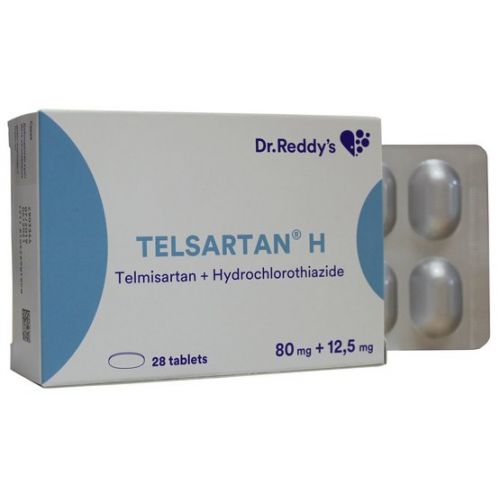
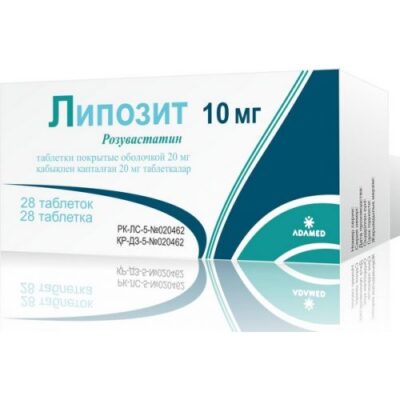
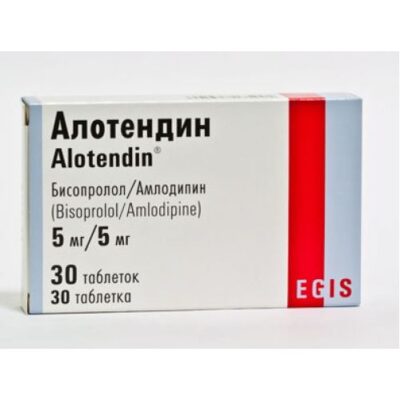
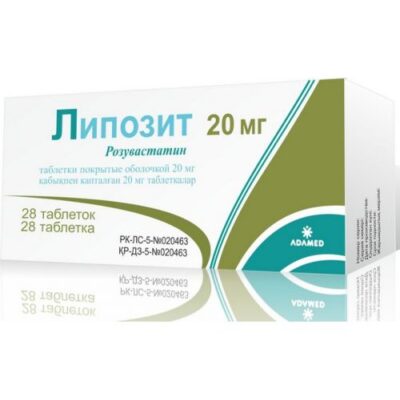
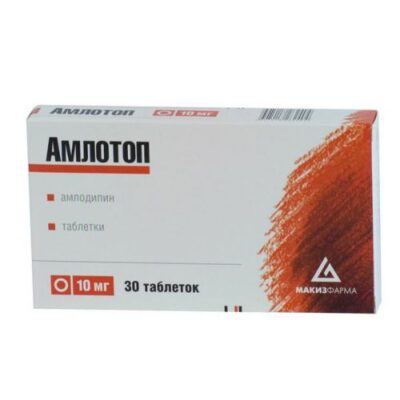
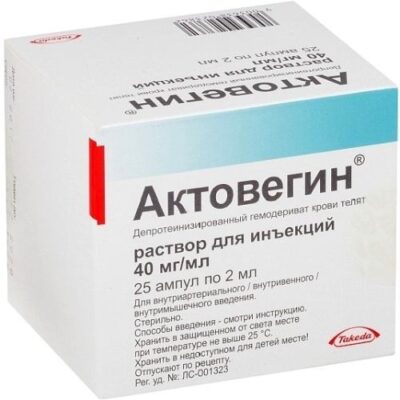
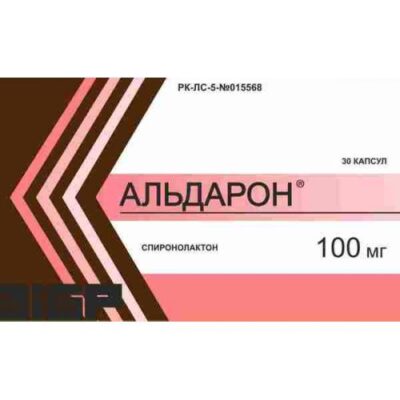
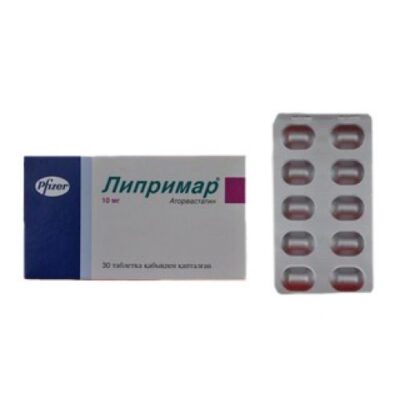
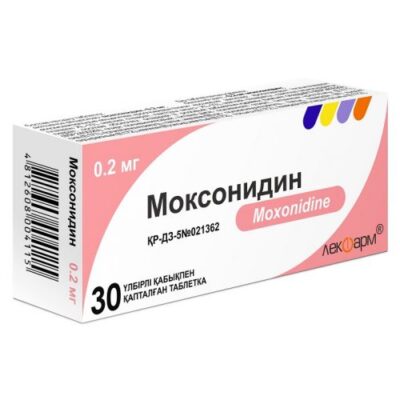
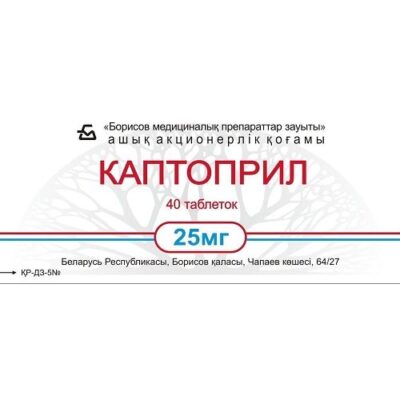
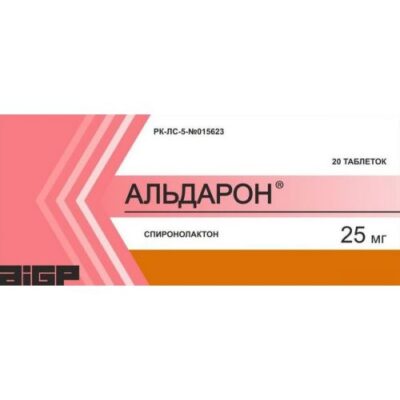






Reviews
There are no reviews yet.